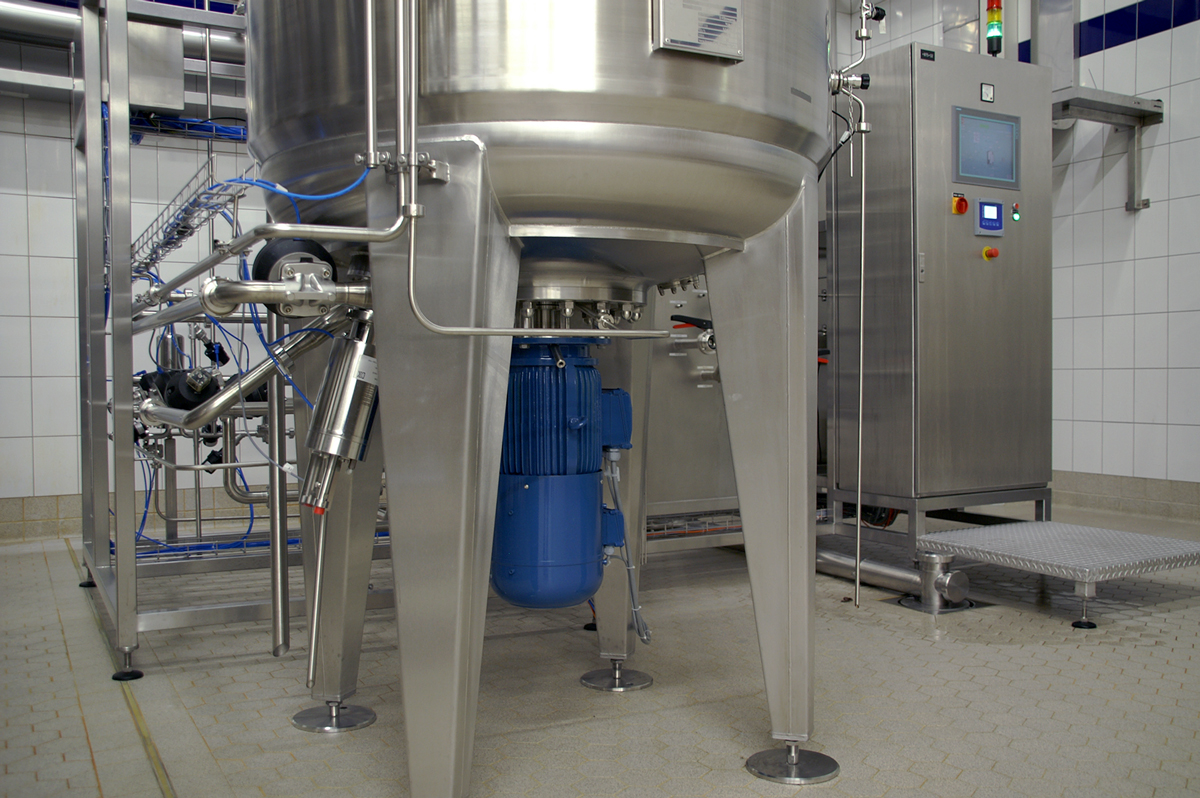FRIBORATOR B AERATION TURBINES
Frings’ rotor/stator aeration turbines enable very high oxygen or gas transfer rates in fermentation media with low energy consumption

PRODUCT DESCRIPTION
The FRIBORATOR B mixing and aeration turbine is used in medium to large plants with high requirements for gas/liquid mass transfer as well as hygiene.
The units can be cleaned, sanitized and sterilized and are offered in different pressure stages for installation in pressure tanks or for unpressurized operation.
Design of the FRIBORATOR B systems
The FRIBORATOR B systems are designed in such a way that the smallest possible gaps and complete drainage are guaranteed. This includes not only the design of the channels and the rotor, but also the elevation of the turbines above the bottom flange.
This allows liquid to drain completely from the reactor at the inclined and ground surfaces, which is a basic requirement for CIP (cleaning in place) that is necessary in hygienic processes.
Technical key data of the units at a glance:
- Rotor/stator unit for installation as bottom drive
- Drive with frequency converter or pole-changing motors
- Installed power from 2.2 to 180 kW
- Production from 1.4301, 1.4404, 1.4571 or alternative materials
- Surface qualities according to specification (up to Ra ≤ 0.8 µm)
- Double mechanical seal with barrier fluid supply (also available with single mechanical seal)
- Flange design adapted to the pressure rating of the reactor tank
- Self-aspiration of air without compressor possible
The selection of the design and the layout are based on the exact requirements
Installation, rheology, power and gas input and other relevant characteristics are taken into account. We would be pleased to discuss the general conditions with you in order to make the ideal selection for your process.
DIFFERENT DESIGN STANDARDS OF FRINGS AERATION TURBINES:
- FRIBORATOR P: for sterile technical processes in biotechnology
- FRIBORATOR B: for hygienic processes in the brewery and beverage industries
- FRIBORATOR G: with equipment and documentation according to GMP pharmaceutical standards
- FRIBORATOR C: without sterile or hygienic design according to chemical standard
- FRIBORATOR TRG: for large reactors (bio commodities, baker’s yeast, …) with additional blower
WHAT ARE FRINGS AERATION TURBINES AND HOW DO THEY WORK?
FRINGS aeration turbines and submerged aerators are high-performance systems for the optimal introduction of gases in chemical reactors, bioreactors and other gas/liquid apparatus.
In particular, these aeration systems are designed for chemical gas/liquid reactions in the low-viscosity range and for oxygen supply of bacteria and yeast cultures.
High performance for an optimized reaction speed
The mass transfer of gas into the liquid is often the rate-limiting step in gas-liquid reactions.
With FRINGS aeration turbines it is possible to increase the speed of this mass transfer compared to other aeration systems.
In chemical reactions this means an increase in the reaction speed and in microbial processes an increased growth and product formation rate.
Minimum installation effort and optimized energy consumption
Our gassing turbines and submerged aerators are characterized by their ability to draw in gas automatically. In many applications, a gas compressor/blower can therefore be omitted and a plant design is possible with minimal installation effort. Even if an additional blower generating pre-pressure has to be installed, suitable control results in extremely efficient systems with very low specific energy consumption.
Operation of the FRINGS gassing system
In FRINGS gassing systems, the star-shaped rotor located at the bottom of the tank to be gassed sucks in liquid axially and accelerates it radially and tangentially at the working surfaces.
A vacuum area is created on the rear side of the working surfaces, which are connected to the gas line, during rotation. Due to the pressure difference compared to the gas pipe, gas flows out into the working area of the rotor and is intensively mixed with the liquid.
The liquid/gas mixture is conveyed into the channels of the stator. At the channel outlets, whose length and geometry depends on the diameter of the tank and the rheology of the medium, the mixture flows out turbulently.
 CONTACT PERSON
Biotech-Team
CONTACT PERSON
Biotech-Team



